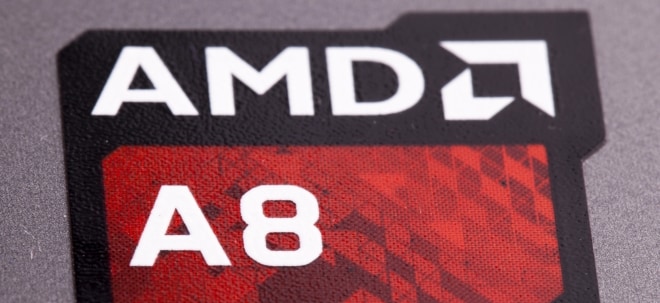NSSA's Moorman Center for Space Studies Occasional Paper Release: Reconciliation and National Security Space
The FY25 budget reconciliation process marks a potentially transformative moment for national security space. A new analysis from NSSA's Moorman Center outlines more than $25 billion in proposed mandatory funding for missile defense, space-based sensors, and space superiority initiatives—plus key insights on how this legislation, if enacted, would alter the traditional budget execution process.
The paper provides practical context and procedural clarity on what reconciliation means for DoD, Congress, and the broader space industrial base.
WASHINGTON, May 6, 2025 /PRNewswire/ -- It is of vital national importance for the Department of Defense to accelerate planning and capability development for possible near-term high-intensity conflict, given growing threats by and coordination among America's adversaries. The Budget Reconciliation process1 underway in the Congress offers a unique opportunity to rapidly boost priority defense programs and enhance deterrence of threats from China, Russia, North Korea, and Iran. This paper highlights recent action in Congress to strengthen key U.S. national security space capabilities as part of the Budget Reconciliation process.
On April 29 the House Armed Service Committee (HASC) approved a bill2 that recommends $150 billion in additional funding for a wide range of DoD programs and activities. This legislation is part of a broader effort by President Trump and the House and Senate Republican leadership to produce a single bill that includes numerous legislative measures, such as an extension of tax cuts and more. The HASC bill was crafted in coordination with the Senate Armed Services Committee leadership. The HASC- approved measure will likely become one title (or section) of a much larger bill drafted by the House Budget Committee. Many of the programs recommended for a budget increase in the HASC-reported bill could significantly enhance U.S. deterrence and warfighting capabilities, including those will help enable achievement of space superiority.
Before turning to an analysis of the bill itself, it is worth cautioning that there is no guarantee that the HASC-reported Reconciliation package will be approved by both houses of Congress and signed into law by the President. Disagreements on Capitol Hill or disputes with the President over non-Defense programs could derail the bill entirely or significantly alter the size and content of the DoD funding section of the Reconciliation package. It also is worth noting the interrelationship between the Reconciliation bill that is under consideration and future actions on the Defense budget. On May 2, the President submitted a "skinny" Federal Budget Request for Fiscal Year (FY) 2026, including for programs and activities that fall within the National Defense "050" budget account. A sizable plus-up for Defense activities in the Reconciliation bill could impact decisions regarding how much should be allocated for Defense in FY 2026 and beyond. Additionally, if the amount appropriated for Defense in FY 2026 includes limited or no real growth in the DoD top-line budget and the Reconciliation package is not approved, then Defense spending could be significantly lower than what is needed to assure deterrence of near-term conflict. This underscores the serious stakes involved in the outcome of the on-going debate over the Reconciliation bill.
The Reconciliation legislation includes an unprecedented infusion of funding to accelerate U.S. space superiority and missile defense capabilities. In total, more than $25 billion is allocated for national security space (NSS) priorities under the umbrella of the "Golden Dome for America" initiative. This initiative reflects a strategic pivot toward space-enabled homeland defense and deterrence through layered missile defense, sensor proliferation, and enhanced responsiveness in contested space domains.
Space-Based Missile Defense and Sensors
The centerpiece of the national security space investment is Section 20003 of the HASC-reported bill, which provides $24.7 billion for integrated air and missile defense activities. Key space-centric investments include:
Program/Capability | Amount | Purpose |
Space-based and boost-phase interceptors | $5.6B | Accelerates next-generation intercept capabilities against hypersonic and ballistic missiles during their most vulnerable early flight stages. |
Military space-based sensors | $7.2B | Develops, procures, and integrates multi-domain satellite-based sensors for persistent global missile tracking and situational awareness. |
AMTI satellites | $2.0B | Acquires air moving target indicator satellites to support layered sensor coverage across domains. |
Directed energy missile defense R&D | $250M | Expands testing of directed energy systems with potential applications in space-based interception. |
National security space launch infrastructure | $500M | Funds infrastructure enhancements to support expanded DoD launch cadence and access to orbit. |
Strategic Capabilities Office space superiority programs (classified) | $300M | Supports classified programs to counter adversary actions in the space domain. |
Missile Defense Agency special programs | $183M | Additional resources for classified space-related MDA projects. |
Collectively, these provisions reflect a strong commitment to developing and fielding a robust, distributed architecture that integrates terrestrial- and space-based elements to enhance homeland defense and strategic warning.
Indo-Pacific Focus and Space Force Enhancements
Section 20009 — focused on improving USINDOPACOM capabilities — includes significant space superiority investments relevant to the Pacific theater and broader NSS architecture:
Program/Capability | Amount | Purpose |
Classified military space superiority programs | $4.03B | Supports counterspace operations, deep-space surveillance, and resilient C4ISR for USINDOPACOM and beyond. |
Ground moving target indicator satellites | $100M | Enhances detection of surface and aerial targets across key operating areas. |
DARC and SILENTBARKER programs | $528M | Bolsters space domain awareness through ground-based radar and geosynchronous tracking. |
Space Force facilities improvements | $68M | Upgrades infrastructure to support mission growth and force readiness. |
These investments underscore the shift toward contested domain dominance in support of regional deterrence and rapid response, especially against Chinese military capabilities.
The reconciliation bill—if enacted—would function as a de facto combined authorization and appropriation for the programs and funding lines it specifies. It provides both the legal authority to obligate funds and detailed statutory guidance on their use through mandatory spending provisions, eliminating the need for separate authorizing or appropriations legislation for these activities.
Strategic Implications
The national security space funding in the Reconciliation bill is structured to support programmatic execution over a multiyear period. Most allocations are designated as mandatory spending and are available for obligation through FY 2029, with specific limitations on outlays beyond September 30, 2034, as outlined in Section 20016 of the legislation. This creates a defined obligation and expenditure window for the DoD and related agencies to plan, contract, and execute funded activities within a 5- to 10-year horizon.
The funding in the bill is organized into large, mission-oriented categories—such as missile defense, space-based sensors, and launch infrastructure—rather than individual program elements. As a result, the precise execution pathways will depend heavily on DoD's internal allocation decisions and subsequent engagement with Congress, particularly the appropriations and authorizing committees. While the bill provides immediate budget authority, execution may involve several mechanisms:
- Reprogramming Actions. DoD may seek to move funds across existing program elements through reprogramming, subject to Congressional notification thresholds and potential prior approval requirements. Given the size of the funding bins, such actions would likely trigger formal reprogramming requests reviewed by all four Congressional defense committees (HAC-D, SAC-D, HASC, SASC).
- Supplemental or Amended Budget Submissions. For FY 2026, the Trump administration may opt to submit an amended budget request or a standalone Supplemental, particularly if the base FY26 submission was finalized prior to passage of the Reconciliation bill. A Supplemental would allow DoD to create new program elements aligned with the funding categories authorized in the bill and begin formal program planning outside the constraints of existing line items.
- Incorporation into Future Budget Submissions. In the FY 2027 President's Budget Request and beyond, DoD is likely to integrate the Reconciliation-authorized funding into formal budget justifications. This would include establishing new Program Elements (PEs), updating Selected Acquisition Reports (SARs), and incorporating the new funding into Future Years Defense Program (FYDP) projections.
The bill also directs the Secretary of Defense to submit a detailed expenditure plan within 45 days of enactment and to provide annual progress reports thereafter, as required under Section 20015. These reporting requirements are intended to provide transparency and give Congress oversight over how broadly defined funding is allocated across specific projects or capabilities.
This framework—front-loaded budget authority combined with flexible execution tools—offers DoD both immediate resources and long-term planning flexibility. However, it also places a premium on inter-branch coordination. Effective implementation will depend on how DoD translates broad funding authorizations into executable programs and how Congress responds to subsequent funding reallocations or requests for new starts.
Mike Tierney serves as NSSA's Chief of Legislative Affairs. Chris Williams serves as Chair of the Moorman Center for Space Studies, NSSA's independent think tank.
NSSA is the only U.S. trade association dedicated solely to promoting the health and vitality of the U.S. national security space enterprise (Title 10 and Title 50) and its supporting industry partners. For more information, including how to join the Association, please visit us at www.nssaspace.org
1Budget reconciliation in Congress is a special procedure that expedites the passage of certain federal budget legislation in the Senate, bypassing the filibuster. It allows the majority party to pass a bill with a simple majority vote, instead of the 60-vote supermajority required for most Senate legislation. This is achieved by limiting debate time and restricting amendments, ensuring the bill cannot be filibustered. For more information, see Congressional Research Service, "The Reconciliation Process: Frequently Asked Questions", March 6, 2025
https://www.congress.gov/crs-product/R48444
2https://armedservices.house.gov/uploadedfiles/bill_text.pdf
![]() View original content to download multimedia:https://www.prnewswire.com/news-releases/nssas-moorman-center-for-space-studies-occasional-paper-release-reconciliation-and-national-security-space-302447426.html
View original content to download multimedia:https://www.prnewswire.com/news-releases/nssas-moorman-center-for-space-studies-occasional-paper-release-reconciliation-and-national-security-space-302447426.html
SOURCE National Security Space Association


